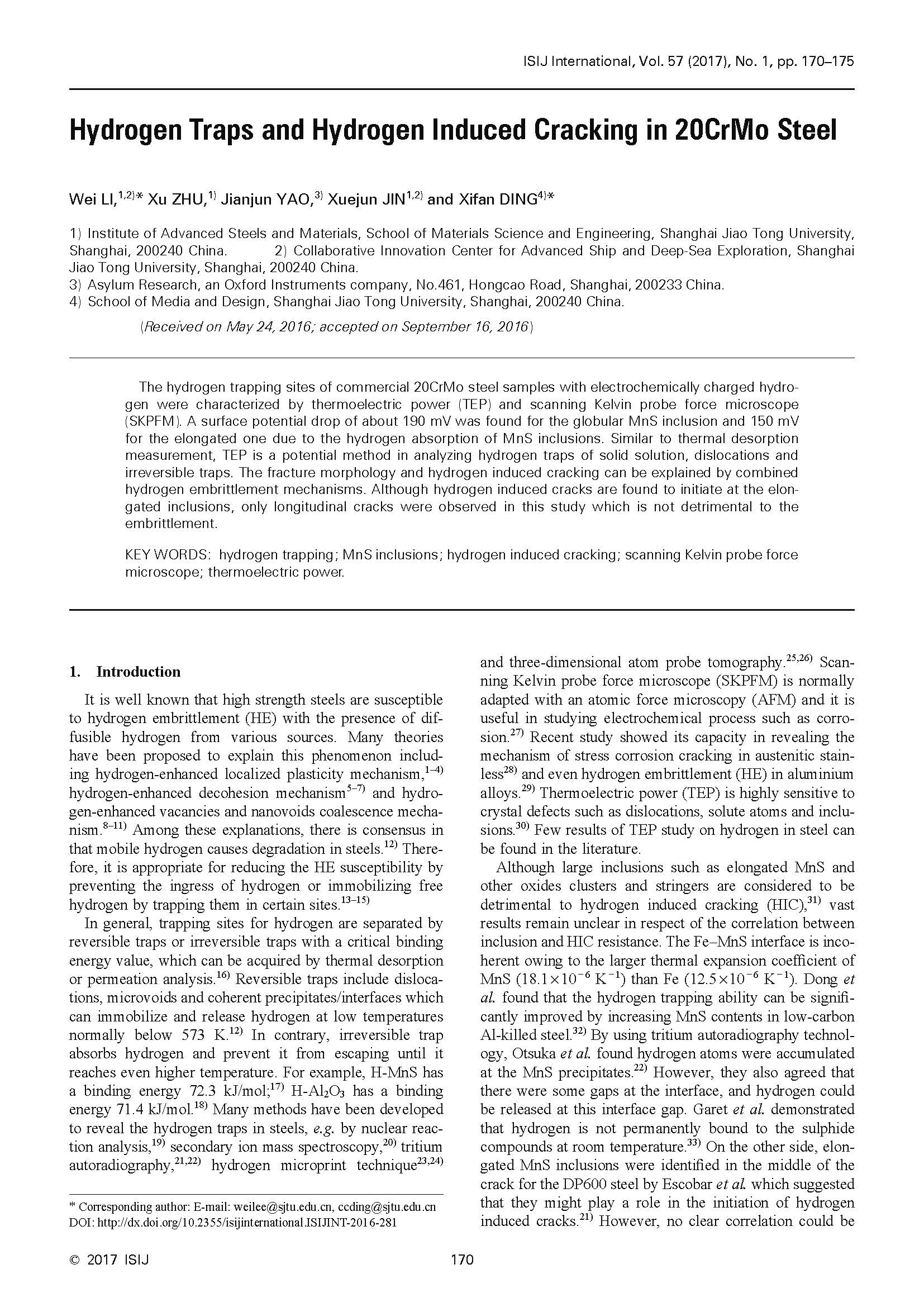The hydrogen trapping sites of commercial 20CrMo steel samples with electrochemically charged hydrogen were characterized by thermoelectric power (TEP) and scanning Kelvin probe force microscope (SKPFM). A surface potential drop of about 190 mV was found for the globular MnS inclusion and 150 mV for the elongated one due to the hydrogen absorption of MnS inclusions. Similar to thermal desorption measurement, TEP is a potential method in analyzing hydrogen traps of solid solution, dislocations and irreversible traps. The fracture morphology and hydrogen induced cracking can be explained by combined hydrogen embrittlement mechanisms. Although hydrogen induced cracks are found to initiate at the elongated inclusions, only longitudinal cracks were observed in this study which is not detrimental to the embrittlement.
